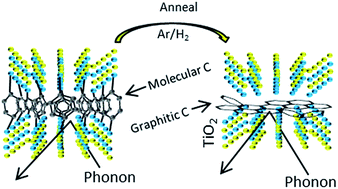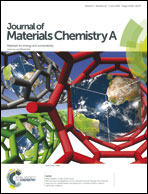Ultra-low thermal conductivity in TiO2:C superlattices
Abstract
TiO2:C superlattices are fabricated from atomic/molecular layer deposited (ALD/MLD) inorganic–organic [(TiO2)m(Ti–O–C6H4–O–)k=1]n thin films via a post-deposition annealing treatment that converts the as-deposited monomolecular organic layers into sub-nanometer-thick graphitic interface layers confined within the TiO2 matrix. The internal graphitic layers act as effective phonon-scattering boundaries that bring about a ten-fold reduction in the thermal conductivity of the films with a decreasing superlattice period down to an ultra-low value of 0.66 ± 0.04 W m−1 K−1 – a finding that makes inorganic-C superlattices fabricated by the present method promising structures for e.g. high-temperature thermal barriers and thermoelectric applications.


 Please wait while we load your content...
Please wait while we load your content...